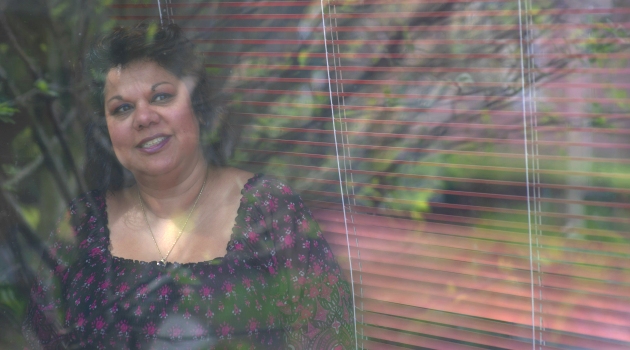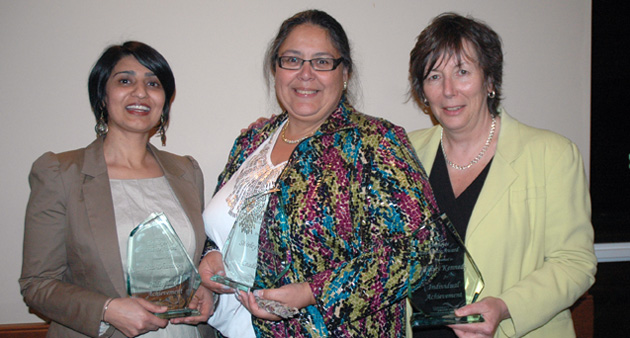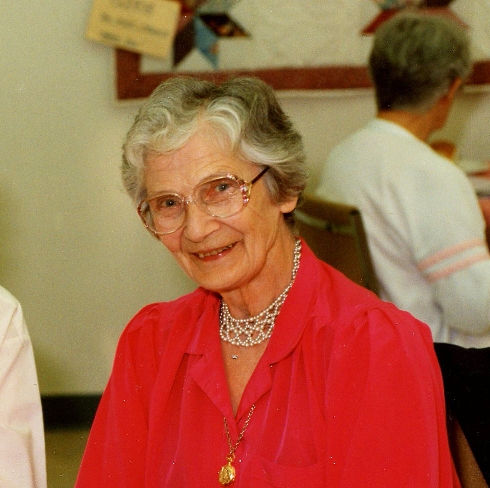The Gatekeeper: who should decide if a student is truly suitable for their chose field? Skookum Soundoff with Maple Melder-Crozier

I am an educator. As such, I have a mandate to educate the students who come to my classes, using agreed upon educational outcomes and appropriately designed curriculum. I freely share my expertise and relevant experiences. I create innovative assignments, and in-class activities that reinforce student learning. I exhaustively research the most current data, and incorporate requests of future employers and professional association regulators into my course materials.
Those of us who also require a practical component in our programs such as a field practicum, balance student geographical logistics, and life demands such as jobs and children, then match desired student learning with practicum sites and responsibilities, all to facilitate student growth and development. “These sites are working environments with real clients seeking assistance with real issues. As such, the protection of clients must be paramount” (Rammage, Stagg, Puder, & Melder Crozier, 2007, p 30).
As educators who train our students to work with vulnerable populations, the Child and Youth Care faculty has an added mantle of responsibility to train them well. And yet, we often wonder, “Are we doing enough for those whom they will serve?” Regularly our faculty has given serious thought, time, and discussion to the suitability of our graduates. Through our discussions, we have come to define suitability as a combination of vocational “calling, natural talent, and the ability to master the competencies of the field, along with a motivation to combine these strengths for the benefit of others” (Rammage, et al., 2007, p 34).
Now ours is not the only department that should consider this. Any program that has graduates who work with populations of those who are 19 years old or younger, mentally or physically vulnerable, and otherwise dependent should undertake this discussion.
I contend that all departments should wrestle with this question and not just the human-service–oriented faculties. I expect BSc grads to have such high ethics that they wouldn’t misrepresent results of a clinical trial. I expect Crim grads never to discriminate against women officers. I believe metal fabricators should take such pride in their work that they settle for nothing less than the best quality and strength in each weld. So every program should consider the impact of their future graduates. But whose responsibility is it to say “no” to some students?
I acknowledge that students have a right to an education. I know that if a student applied to our program and passed the admission requirements, they would be allowed to begin our program, but I also want to believe that a student’s multiyear journey with me instructs them in the philosophy, knowledge, and skills of our field, and makes a positive difference to future clients. I dare to believe that the student is a better citizen for having been at UFV.
But what about that student who isn’t changed? UFV has stated that its “core purpose is to serve the students and communities of the Fraser Valley.” The author of that document continues that the education is “transformative for both” and then acknowledges that “we do not and cannot provide everything. We make choices and we have our strengths” (Davis, 2011, P. 4). What can be done then for those who choose not to internalize their education, and therefore are not transformed?
What do we do with the adult who had it all figured out before they came to UFV? How do we instruct those who already know what to do, and “just need the parchment” (Personal Communication, January 2012)? And then, most importantly to this argument, what about the student who is fully trained, makes it through the academic rigor, but is clearly unsuitable and should never work in the field?
Whose responsibility is it, I wonder, to determine this suitability? The university?
The faculty? Or the future employer?
THE UNIVERSITY
The acceptance to university is the first step in this process. Entrance is permitted if the student meets all the requirements, and submits all the necessary documents, along with the application fee. The submitted forms become a file and are sent to the prospective departments for consideration.
Each department embarks on its intake by reviewing these files. Based on a first-come-first-served basis, or weighted criteria, they are judged to have met the criteria to enter the program. Some departments then do individual or group interviews of the prospective students. All pertinent information about the student is reviewed, and the top-ranking candidates are offered a seat in the program.
Is intake the best place to determine whether a student is suitable for practice in the field? Most would agree this would be problematic as we don’t know the students well at intake and may have only met them. More importantly, evaluating incoming students with any standard criteria — weighted or not — is poor insurance that they will be suitable for practice in the field.
The interview process itself is flawed. In individual interviews, candidates put on their best “dog and pony show” to earn approval, often wearing a borrowed suit or walking shakily in new heels. A scrutinized set of questions is asked and key words and phrases are jotted down as validity for accepting or rejecting the candidate. It’s straightforward to recommend those who shine in the interview process, but what of those who do not?
If the candidate seems unsuitable, faculty know they must show a good reason for rejecting him or her, so every nuance of the interview meeting is noted. But how can we accurately judge an individual after the 30- to 45-minute process? How can we avoid judgements based more on personality and presentation than substance of character? Acceptance says we are willing to bet four years’ commitment of their money and time on our judgement; rejection says we are not willing to take a chance on them because they failed an interview.
Even more difficult, the group interview contains varying translations of “ditto” and “I agree with what she said” so it’s an even more clumsy mechanism to use for our student acceptance. It is completely unworkable as a method to assess suitability.
The supposition here is that if a student can qualify to enter a degree program, and handle the academic challenge, they can do the job for which they are being trained. Practica experiences demonstrate that this isn’t always so. If they have chronic health or mental health problems that need regular medication, it’s possible for them to finish a degree, as long as they continue to take their meds. However, their illness could actually make them a risk to the clients they serve.
Is there a provision for not having the physical stamina for the work? Can there be a stipulation for the maturity that life experience brings? What if the student has so much past psychological trauma that almost everything in their coursework triggers them into crisis? What if they find themselves in a values conflict with department philosophy? If they can’t find a way to work through these issues and fit in here, can the student realistically fit into a job in the field?
Many believe that this problem should be managed by an intense and rigorous intake process. Application forms, questionnaires, letters of intent, references, interview process. But how can we discover these tendencies in an one-hour interview; or weaker, a group interview; or from responses to a questionnaire? Even reference letters are not the best judge as people will naturally choose the most glowing ones to submit in their application process. Texas State Univ acknowledges that they can’t make accurate assessment via one appointment/interview because there’s simply not enough reliable information gathered by the process (www.counseling.txstate.edu, Retrieved April 2012).
Some dogmatically believe that a final comprehensive exam is essential before graduation from a four- year degree program. While this type of rigor would weed out incompetent students, or those riding the coattails of their classmates, it would not enlighten invigilators to those who are not suitable. Tests would evaluate classroom adherence to course objectives and outcomes, academic rigor and reading; it would not elucidate personality types that would not be suitable to provide quality practice.
Using a competency-based approach articulates personal attributes, skills, and knowledge that are critical for the job for which they are training and competency is created and thus, used to assess these. This falls to the same fate as a comp final, testing requirements, but not suitability.
Caroline Currer (2009) believes that universities “must ensure that those who qualify are suitable or fit for practice”. She feels post-secondary institutions have the responsibility of a gate-keeping role for the profession. To that end, England now has the requirement for registration for students in social work programs to bring assessment of student work and professional conduct to the fore. They also have developed a national “conduct procedure” (Currer, 2009).
Laurentian, a fellow Canadian institution, has summarized its institutional thoughts on this discussion. Their website states that admission is based on the assumption that the student has potential academic ability and personal suitability for a career. “The University then reserves the right to dismiss a student if s/he does not make progress…or demonstrates behaviour or attitude that is unsuitable.” There is due process, and the student can reapply after s/he has documentation of how s/he has addressed the concerns of professional ethical behaviour or personal suitability for the profession (www.Laurentian. ca, Retrieved April 2012).
Should the Admissions and Records department of the university be the gatekeeper? Or should the department?
THE DEPARTMENT
Administrative pressure may be given as a rationale for not considering suitability at the department level. We all want full classes for the sustainability and optics of our programs. With that in mind, we tend to err on the side of admitting students who are unknown or unproven. With funding tied to enrolment, it is easy to reduce the requirements — for suitability or any other critical factor — when numbers are low (Rammage, et al., 2007).
We mustn’t, however, confuse suitability with readiness. Readiness implies that some aspect of learning is in process but not fully developed (Rammage, et al., 2007). It is the level of maturity or ability that a student possesses currently and their potential to internalize their learning so it becomes part of their practice, part of their disposition, and part of their person. Students are ready to learn at intake into university. Most are ready to take in classroom information, consider it in light of what they know already, and come to a new understanding of the real world challenges ahead. Piaget (www.Learning and Teaching. info, Retrieved April 2012) called this dialectical process assimilation and accommodation, and saw it as necessary for adaptation to one’s environment. Another way to explain this would be fitting theory to practice (P 5). These processes occur simultaneously — just as the mower blade cuts the grass, the grass gradually blunts the blade — especially in children. As we grow older, we find it increasingly difficult to accept new information, as we are “more set in our ways” (www.Learning and Teaching. info, Retrieved April 2012). Assimilation is when we take in the new info, mull it over and then accept it as truth. Accommodation is when we try to see where it fits with what we already know. And when these both occur, we adapt our behaviour to incorporate the new information. But people who are not suitable, may not be able to make it to this last step, rendering their years of university training at best, ineffective. A further reason for allowing students to enter programs although they may not be ready is to allow for the natural growth and change that comes naturally to most students within the program, because of the program itself.
All learning is a form of personal change. Learning can be resisted or embraced. There is accompanying loss involved for the experienced adult in “changing their ways”. This has been termed supplantive learning (Atherton, 1999). Supplantive learning arises from awareness of a disconnect between what is taught and what a student is willing to do. When there is a significant emotional investment in previous beliefs or ways of acting, it can be problematic, and even destabilizing. S/he may experience a diminished sense of competence. This supplanting can spur students into crisis. Even when this change is precipitated by a supportive facilitating environment such as a post-secondary classroom, the student may choose not to be re-oriented to the new learning. This occurs if there is a strong values conflict between the student and the course/program philosophy (Atherton, 1991; Rammage, et al., 2007).
Supplantive learning requires not additive learning, but replacement learning. That is, it replaces previously acquired attitudes, knowledge or skills, and may bring frustration and the loss of morale associated with not being able to do things the “new way” as well as they did them the “old way” (Atherton, 1991).
Admittedly, we don’t know the students well until we see them participate in practicum. This is a great opportunity to see their knowledge enacted through skills acquired in their field of learning. This may also be the place where the lack of supplantive learning is manifested. The fit of the student to the practicum site may be an indicator of either the student’s suitability or of the efficacy of the practica placement. If the student doesn’t succeed in practicum, a review of their overall suitability may be in order.
The University of Oslo (www.ulo.no/english/studies/about/regulations/suitability, Retrieved 9 April 2012) strongly contends that suitability should be a part of the “overall assessment of student’s academic and personal qualifications to work in the profession” of training. They suggest these suitability assessments must happen in all human service programs, and should take place for all students throughout their studies. According to their website, the field expects rules of suitability to be applied at a faculty and university level.
At UFV, some departments — Social Work’s BA and MA, for example — cite suitability as an entrance requirement. One suggestion is to integrate demonstration of suitability into the program. Would a rigorous evaluation, and a gentle discussion to encourage a student to self-select out hold up against an appeal? Would we then structure our reference letter for this student differently?
Is professional suitability an academic matter?
THE EMPLOYER
Evaluating job suitability in large organizations requires much rigorous assessment. The federal government has six levels of assessment and screening to judge applicants for the principle purpose of hiring the people who are most suitable for the job (Bryant & Norris, 2002). Then there is ongoing evaluation, generally at six months employment and following annually to ensure continued confidence in the employee.
Rammage, Stagg, Puder, and Melder Crozier (2007) assert that suitability is more than following ethical standards. “One can follow the ethical codes of our profession without adopting the necessary reasoning process and understanding required” (p 33). The use of self in relationship is the cornerstone of child and youth care practice. That is why suitability is so critical in our field. There is an assumption that students who complete our program are prepared and suitable for work in the CYC field. However, educational institutes do not see themselves as gatekeepers, but as educators (Rammage, et al., 2007). We train the students, but the field truly determines if the students can earn a living as a practitioner. Alarmingly, a manager of a CYC program stated “we hope educators are the gatekeepers for the CYC profession” (Rammage et al., 2007).
Employers are counting on educators to judge when a student is not suitable to work in the field (Rammage, et al., 2007). “Perhaps our focus on evaluating strength and potential leaves us unaware of some of the ‘red flags’ that may indicate that a student is moving into the wrong profession” (Rammage, et al., 2007, p 30).
So the question remains, who should be the gatekeeper?
CONCLUSION
According to Rath (2007), those who develop natural talents into strengths and work in roles that they are good at are more engaged in and successful at their work. Perhaps suitability is the combination of a calling, natural talent, and ability to master the competencies of the field, and a motivation to combine one’s callings and talent into strengths for the benefit of others (Rammage, et al., 2007).
But who is to safeguard this? As an educator, I believe we have a responsibility to educate our students; we have a greater duty to protect the vulnerable.
This article is an online-only component of the Spring 2012 issue of UFV Skookum magazine.





